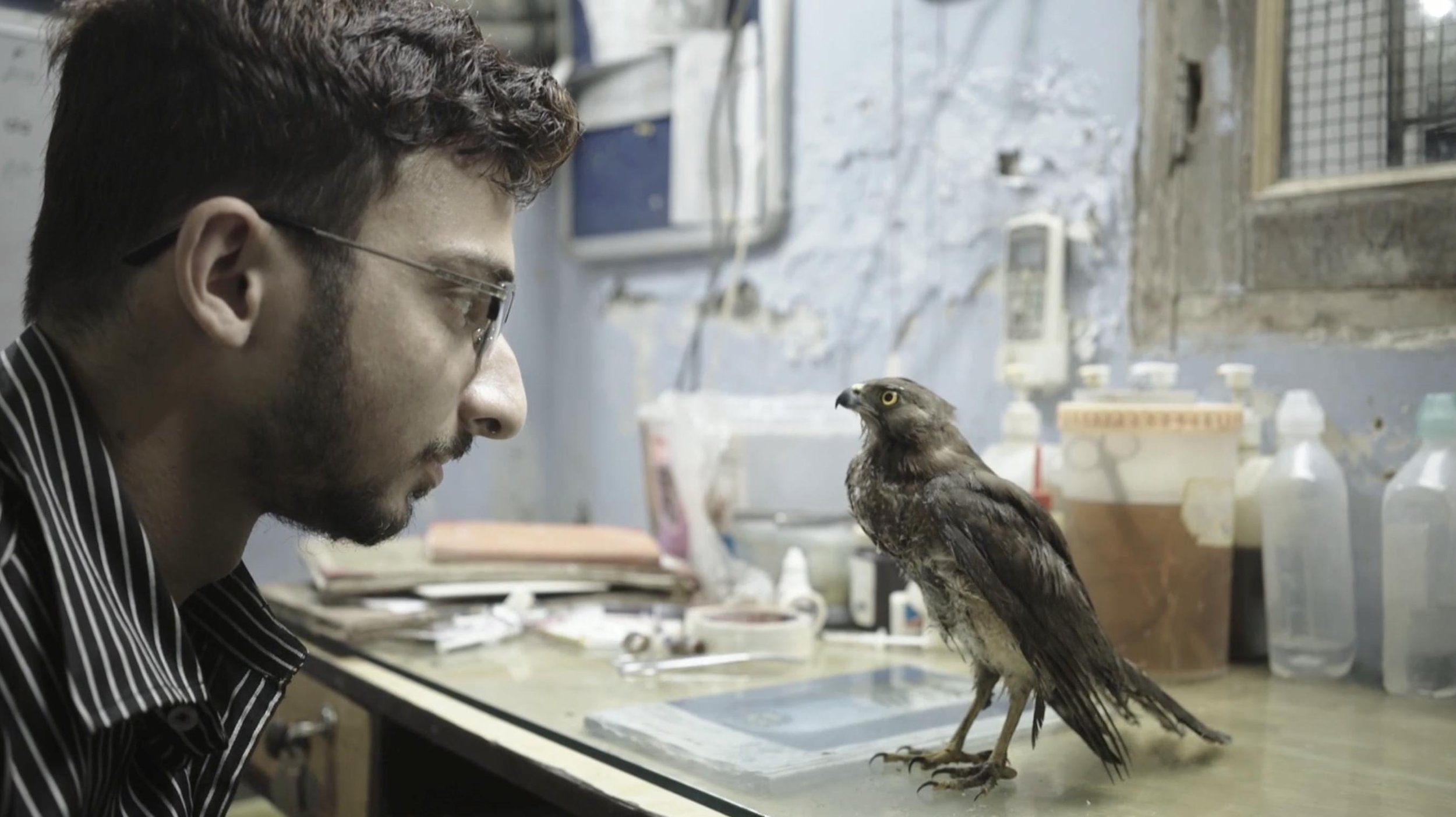Healing New Delhi’s Birds of Prey
Still from All that Breathes. [IndieWire/twitter]
From the very first scene of Shaunak Sen’s All That Breathes – a slow pan across a New Delhi landfill that lovingly highlights its creepy-crawly inhabitants – the film never ceases to be arresting.
The winner of the World Cinema Documentary prize at the 2022 Sundance Film Festival, the documentary follows Mohammad Saud and Nadeem Shehzad, two endearingly nerdy brothers who have dedicated their lives to caring for black kites, the birds of prey that circle Delhi’s skies. The creatures have begun to fall victim to the city’s extreme air pollution.
With intimacy and a dash of the surreal, Sen captures the men as they quietly contend with insurmountable bureaucracy, anti-Muslim racism and a growing cascade of birds in need of their care. I recently spoke with Sen about the film, and how he aspires to become “wallpapery” while making documentaries.
This interview has been edited for length and clarity.
What was the initial impulse for making All That Breathes?
At least for me, a film usually starts as a kind of feeling, this vague iridescent glow in the back of my head. Before we met any characters, I had an inkling about a texture, which largely had to do with the vast inky grayness of New Delhi. Anybody who's lived in the city in recent years knows that there's a kind of gray monotone here, a gray lamina that coats all our lives. You're constantly conscious of the noxious air that you're breathing, and the sense that the very environment that is meant to sustain you is increasingly becoming hostile, and on the brink of some kind of collapse. Every time, say, I'd be driving and I'd look up, there were these tiny dots peppering the sky, which are black kites. In a way, this is the classic dystopic image of the city: the gray skies and the dots.
Before anything else, I was interested in this gray texture; in human and nonhuman relationships, specifically with birds; and with the birds that were falling out of the sky. And in a broader sense, in living in a kind of extreme ecosystem like Delhi.
Then we started looking for people who had a profound relationship with birds or the skies. And that's when we came across the brothers. They work out of this damp, derelict basement with a lot of heavy machinery and industrial decay, yet on the other side of that space you see these magisterial, vulnerable birds being treated. That was so cinematic. That's where the film began.
How long did it take you to make the film, and what was your approach going in?
Preliminary shooting took about two years, and the main production shoot was a full year. We shot through 2019, 2020 and 2021, which was obviously very punctured because of the pandemic.
In my view, the best quality of observational films is their ability to capture things that are soaked in a kind of everyday quotidianness. That is often purely a function of time. The main game is to invest time, time, time, and only then will you have enough footage to be able to pluck out vignettes.
In this case, the actions that happened every day were cyclical – birds would get carried in boxes; they would get treated in a tiny, claustrophobic basement; and then they would get taken to this enclosure on the terrace. That allowed us to plan and orchestrate our camera movements. But in the first months, the presence of the camera is too obtrusive; the aspiration for the filmmaker is to recede into some kind of wallpapery form. If you shoot for a really long time, eventually characters start to "be" instead of "behave" in front of the camera.
How exceptional is the work the brothers are doing?
I'm absolutely certain that nobody in the city works the way they do. They've always been interested in birds, and like the film gestures, they would accompany their family to perform this particular Muslim ritual that you see in a lot of Muslim areas in the city, which is meat tossing in places where the kites fly. There is this belief that by feeding these birds, you are washing away your sins. So, the brothers would go, and inevitably there would be a bird that was either entangled in wires or in paper kite trails, and they would pick up the bird and treat it at home. It was through this extremely informal practice that they started improvising their own techniques. More than 15 years later, the remnants of that slapdash setup still remain, even though a lot of their techniques are better than those of many trained vets.
The film is not explicitly political, but you do mention that the brothers are Muslim, and their work is happening against the background of growing Muslim persecution. How did you think about incorporating politics into the documentary?
Like you said, the film is not explicitly political. There are lots of films that are snapshots of political moments, and I have profound respect for them, but this project was not that. The core of this film was the ecological, about the human-animal relationship. To me, the problems the brothers were facing symptomized a broader kind of ecological malaise.
However, in the last few years, the city of Delhi has witnessed a large degree of social turbulence and unrest in the streets. In a way, my main challenge as a filmmaker was to be disciplined enough to keep my gaze trained on the brothers alone, even though there was such turmoil outside. Eventually, we arrived on this idea of the "leak": Every time a character goes to the balcony, you hear audio of the chaos happening on the street. Essentially, the social world and all the unrest outside leak in, up to the point where its ominous potential becomes clear.
How did you think about what All That Breathes would look like?
Well, the grammar of the film developed over time. So, the main pillar was the human story of the brothers, and we knew the film language for that would be the classic observational style. Apart from that, we wanted to find a form that would indicate the coexistence of various kinds of nonhuman life in the city. We had a German cinematographer called Ben Bernhard, and with him we developed this language of cinematic reveal: slow, languid pans; focus shifts. As the city goes on in all its everyday bustle, we started to scan landscapes and find nonhuman life in them.
Could you talk a little bit about your first film, also set in Delhi, Cities of Sleep?
Cities of Sleep essentially looks at the city of Delhi through the lens of sleep. It follows one “sleep community” of homeless people and a renegade homeless sleeper who shuttles from place to place across various nights. It's an investigation of the city at night, through sleep, which is viewed as a profoundly political sphere wherein different kinds of power get exercised. To put it another way, Cities of Sleep sees Delhi through sleep, along a horizontal axis, and All That Breathes looks at Delhi through the lens of birds, along a vertical axis.
You're from Delhi. Is it important to you that the city plays a role in your films?
It's not important in the sense of it being a manifesto. But the directorial team and I are mostly from Delhi, and we're all very embedded in the vernacular cultures. Like most megapolises, when you enter the city through a specific lens, it really disassembles itself in unexpected ways. So, I wouldn't say that I'm a “Delhi filmmaker,” but the city is definitely an integral part of both my films and of how I approach things. I think it's also a very particular city, not just sociopolitically but also climate-wise; it staggers your senses. And before you know it, things gather momentum because so much is happening. I'm sure this is true of many other cities, but there seems to be something specific to Delhi, especially given that it is at the intersection of a climate emergency and, in recent times, a volatile sociopolitical moment.




